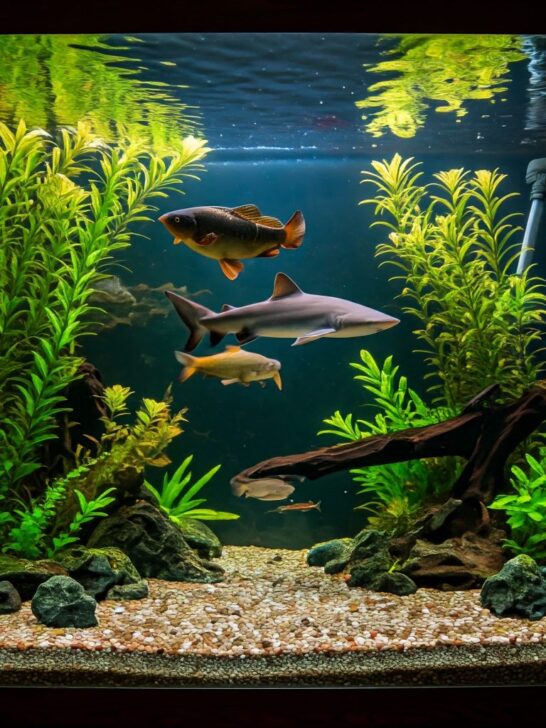There are no known species of sharks that are naturally albino. However, albinism is a rare genetic condition that can occur in any species, including sharks. Albino sharks are characterized by their lack of melanin, the pigment that gives skin, hair, and eyes their color. This results in a pale or white appearance.
Freshwater sharks have become increasingly popular among aquarium enthusiasts for their unique shapes, vibrant colors, and dynamic swimming behaviors. Despite their name, these species are not true sharks but are given the moniker because of their shark-like appearance. They can make a stunning addition to an aquarium if chosen and cared for properly. This article dives into the characteristics, care requirements, and compatibility of some of the best freshwater sharks suitable for aquariums.
A Note on “Freshwater Sharks”
Before we dive into the specifics of these fish, it’s important to clarify that these species, while often called “sharks,” aren’t true sharks. They belong to the Cyprinid family (carp and minnows) and share a small shark-like appearance due to their elongated bodies and dorsal fins.
Types of Freshwater Sharks for Aquariums
1. Rainbow Shark (Epalzeorhynchos frenatum)
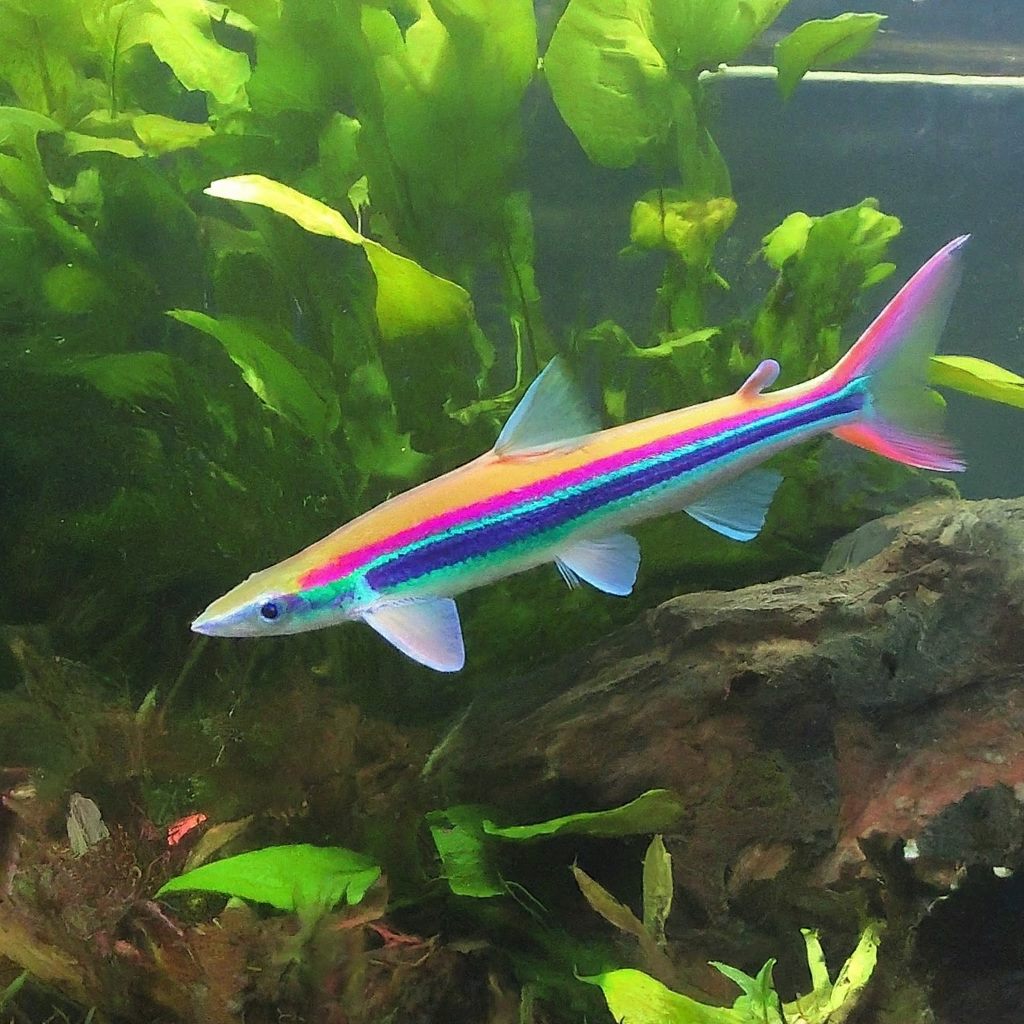
Description:
The Albino Rainbow Shark is a striking freshwater fish known for its pale, almost white body and bright orange or red fins. This species is a color variant of the Rainbow Shark.
Care Requirements:
- Size: Up to 6 inches
- Tank Size: 50 gallons minimum
- Diet: Omnivorous; enjoys algae, plant matter, and protein-rich pellets or flakes.
- Temperament: Semi-aggressive; territorial with other bottom dwellers.
- Water Conditions: pH 6.5–7.5, temperature 72–79°F
Notes:
Albino Rainbow Sharks are best kept with fast-moving tank mates and require hiding spots to establish their territories.
Vibrant Red Tails
- Colorful Additions: With vibrant red tails and sleek bodies, Rainbow Sharks introduce a splash of color to aquarium landscapes.
- Territorial Considerations: Understanding their territorial nature is crucial for maintaining a harmonious tank environment.
2. Bala Shark (Balantiocheilos melanopterus)
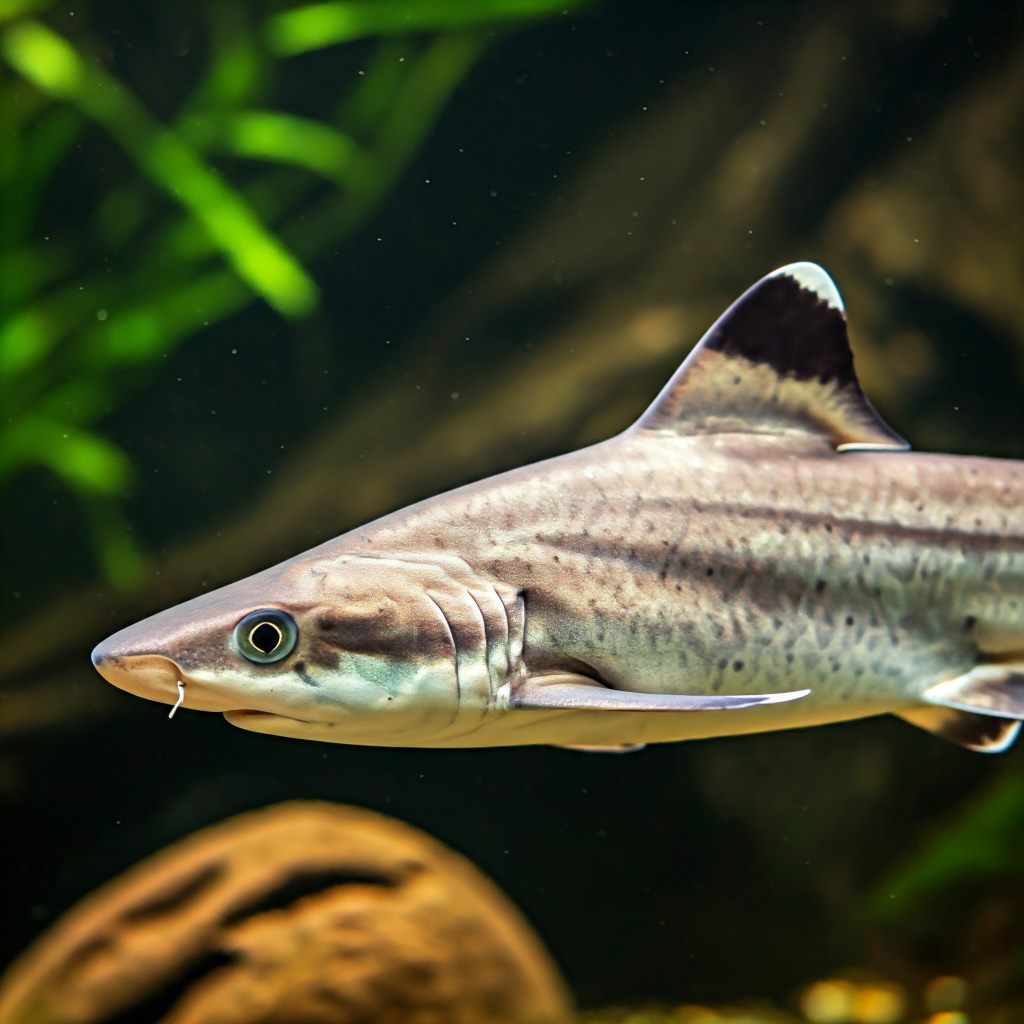
Description:
Bala Sharks are sleek, silver fish with black-tipped fins. Their torpedo-shaped bodies and active swimming style make them captivating additions to larger tanks.
Care Requirements:
- Size: Up to 12 inches
- Tank Size: 100 gallons minimum
- Diet: Omnivorous; enjoys flakes, pellets, and live foods.
- Temperament: Peaceful but active; thrives in groups.
- Water Conditions: pH 6.0–8.0, temperature 72–82°F
Notes:
These fish need ample swimming space and a secure lid, as they are known jumpers.
Silver Speedsters
- Elegant Swimmers: Recognized for their silver torpedo-like bodies, Bala Sharks bring grace and speed to freshwater aquariums.
- Schooling Behavior: Thriving in groups, Bala Sharks exhibit their most natural behaviors when kept in schools.
3. Black Minnowshark (Labeo chrysophekadion)
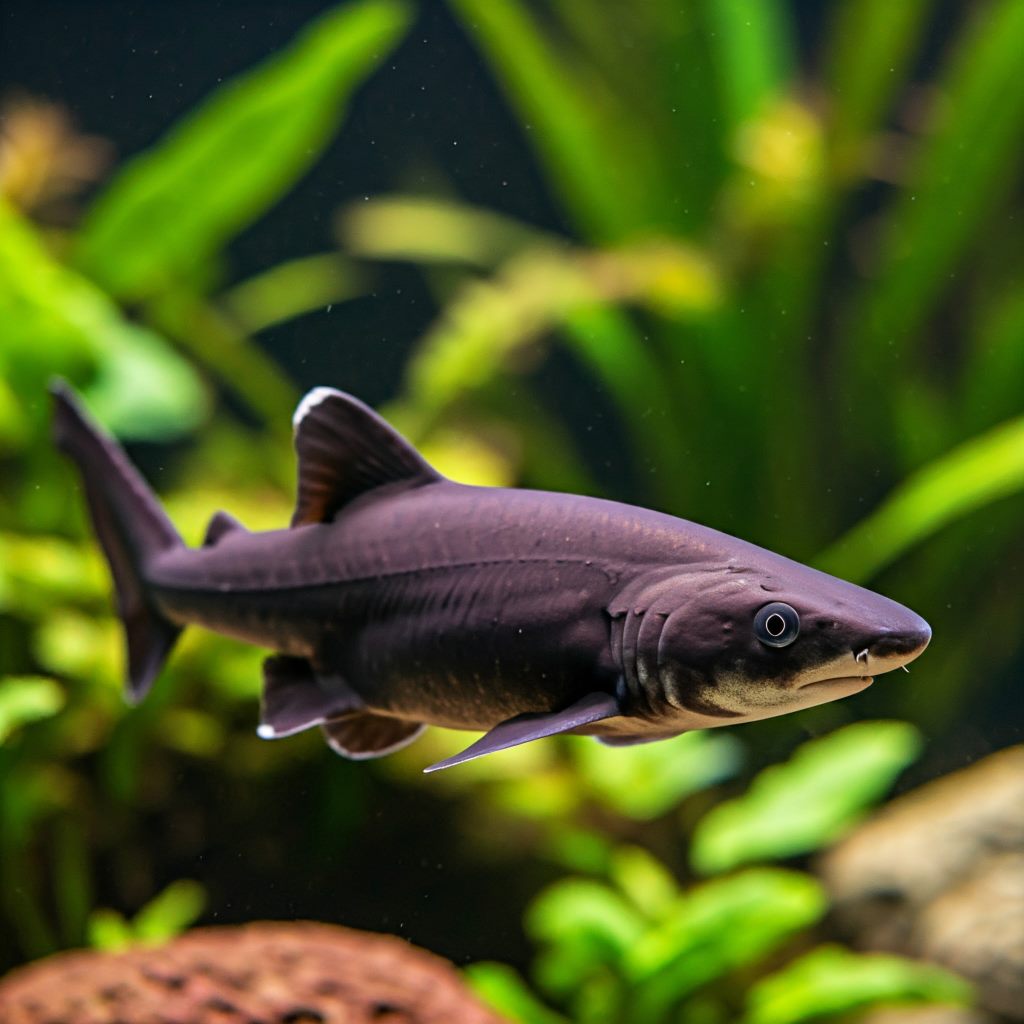
Description:
Black Sharks are large, jet-black fish that develop a metallic sheen as they mature. They are prized for their dramatic appearance.
Care Requirements:
- Size: Up to 24 inches
- Tank Size: 150 gallons minimum
- Diet: Herbivorous; prefers algae wafers, leafy greens, and vegetable-based foods.
- Temperament: Aggressive; solitary.
- Water Conditions: pH 6.5–7.5, temperature 72–82°F
Notes:
These fish are best kept in single-species tanks due to their aggressive tendencies and large size.
Stealthy Black Presence
- Black Elegance: Black Sharkminnows, with their sleek black bodies, add a touch of stealthy elegance to aquariums.
- Tank Compatibility: Understanding their preferences for open spaces and adequate hiding spots ensures their comfort.
4. Chinese Algae Eater (Gyrinocheilus aymonieri)
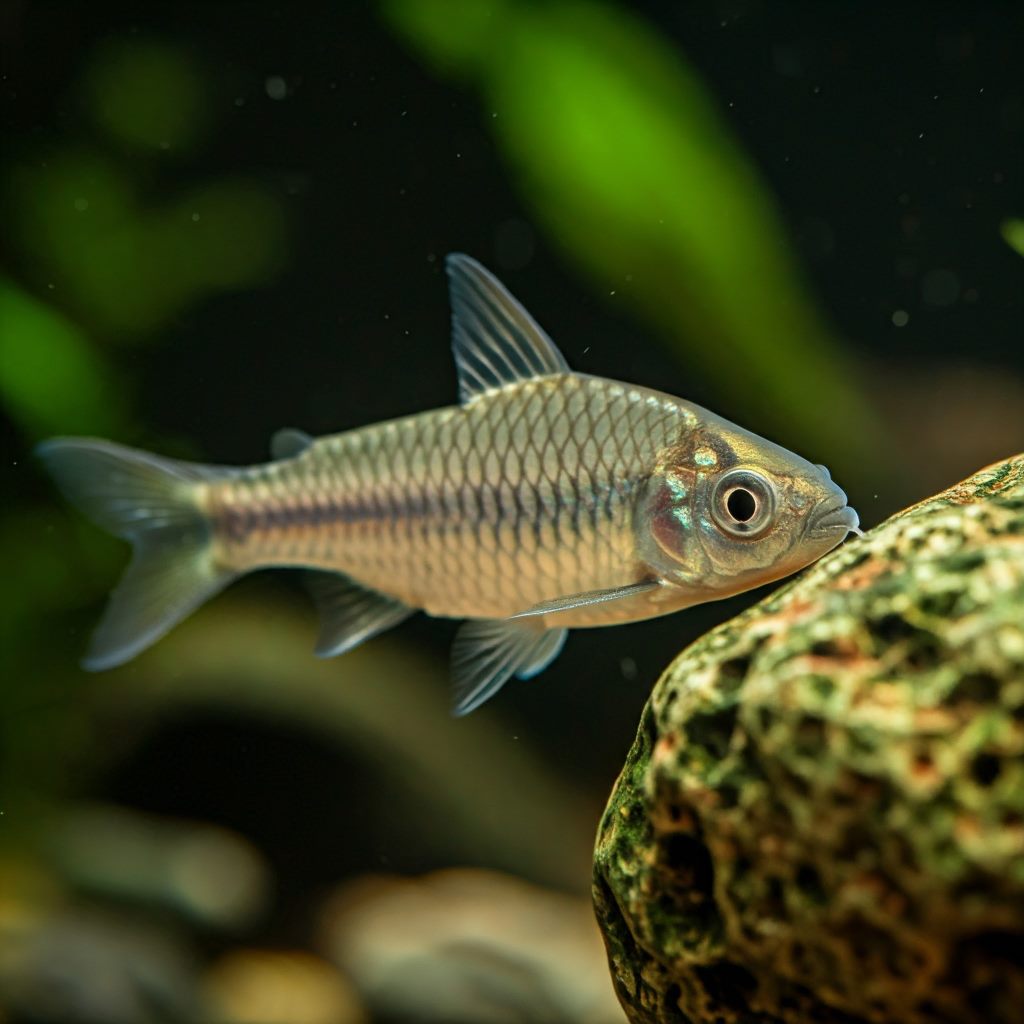
Description:
The Chinese Algae Eater is a hardy species known for its ability to clean algae from tank surfaces. It has a slender body with a sucker-like mouth.
Care Requirements:
- Size: Up to 10 inches
- Tank Size: 30 gallons minimum
- Diet: Herbivorous; thrives on algae, wafers, and fresh vegetables.
- Temperament: Semi-aggressive, particularly as it matures.
- Water Conditions: pH 6.0–8.0, temperature 74–80°F
Notes:
This fish is excellent for algae control but may become territorial with age.
5. Chinese High-Fin Banded Shark (Myxocyprinus asiaticus)
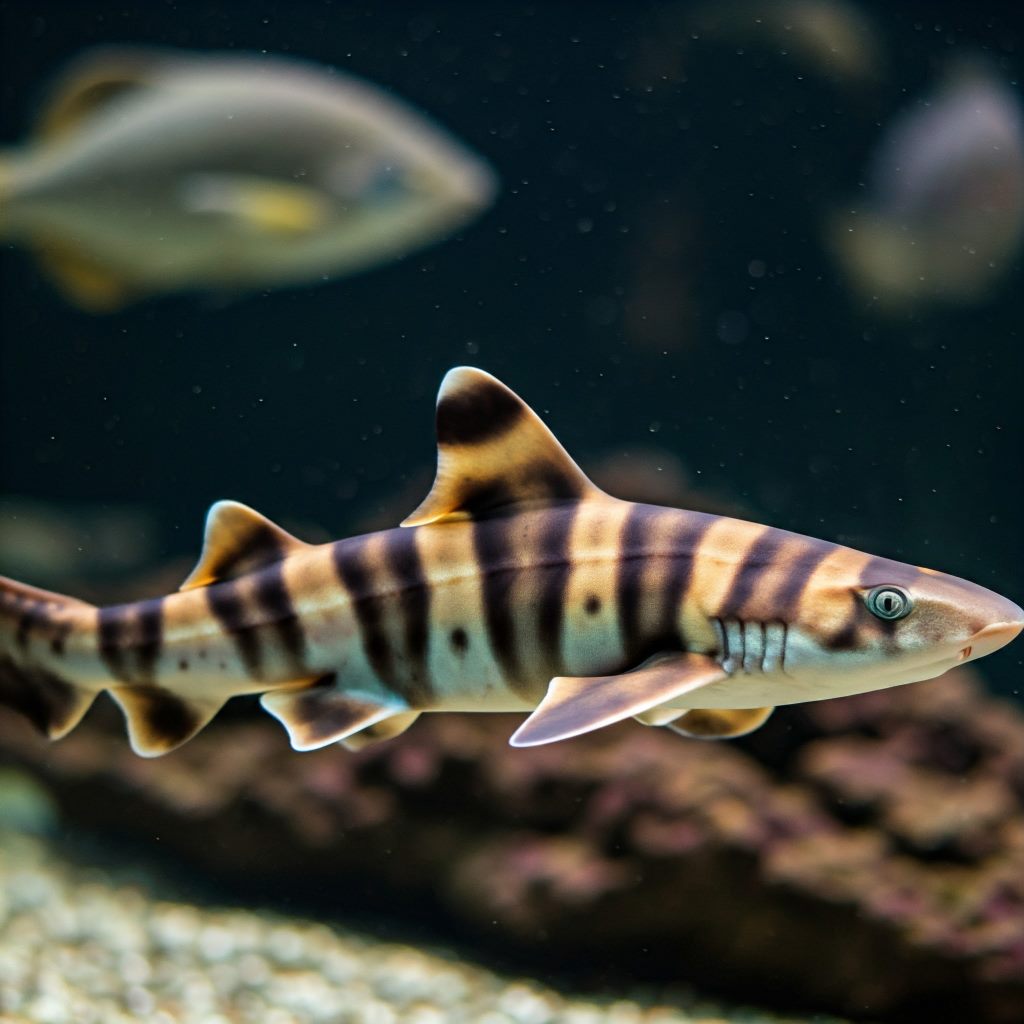
Description:
This shark-like fish features a striking pattern of dark and light vertical bands. It is most active in cooler water tanks.
Care Requirements:
- Size: Up to 40 inches
- Tank Size: 300 gallons minimum
- Diet: Herbivorous; prefers algae, biofilm, and plant-based foods.
- Temperament: Peaceful.
- Water Conditions: pH 6.8–7.5, temperature 60–75°F
Notes:
It is a cold-water species ideal for ponds or large aquariums.
Majestic Fins
- High-Fin Elegance: With elongated dorsal fins, the Chinese High Fin Banded Shark showcases regal elegance, making it a captivating centerpiece.
- Tank Size Considerations: Due to their substantial size, providing a spacious tank is crucial for their overall well-being.
6. Columbian Shark Catfish (Ariopsis seemanni)
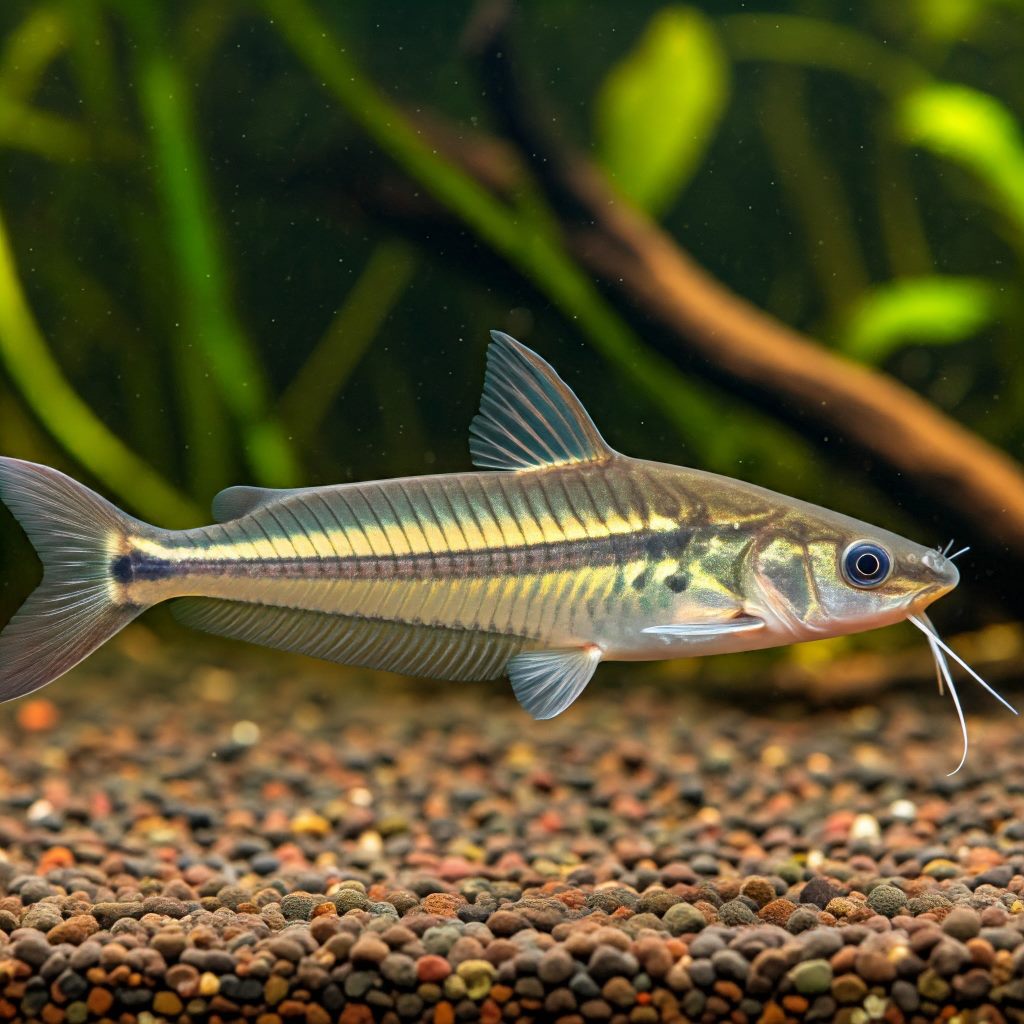
Description:
Also known as the Silver Tip Shark, this catfish species has a sleek, metallic body and grows quite large.
Care Requirements:
- Size: Up to 14 inches
- Tank Size: 75 gallons minimum
- Diet: Omnivorous; thrives on shrimp, pellets, and live foods.
- Temperament: Peaceful but prefers brackish water.
- Water Conditions: pH 7.0–8.0, temperature 75–82°F
Notes:
Requires brackish water as it matures.
A Taste of the Tropics
- Tropical Aesthetics: Resembling a mini shark with its elongated body, the Colombian Shark adds a tropical flair to freshwater setups.
- Benthic Explorer: With a penchant for exploring the tank bottom, providing suitable hiding spots enhances their well-being.
7. Cosmic-Blue Glo Shark
Description:
This is a genetically modified variant of the Rainbow Shark (Epalzeorhynchos frenatum) featuring a fluorescent blue hue. These fish share the same care requirements as Rainbow Sharks, needing a 55-gallon tank and a varied omnivorous diet. Their vibrant color makes them a popular choice for aquariums.
Care Requirements:
- Size: Up to 6 inches
- Tank Size: 50 gallons minimum
- Diet: Omnivorous; accepts standard flakes and pellets.
- Temperament: Semi-aggressive.
- Water Conditions: pH 6.5–7.5, temperature 72–79°F
Notes:
Perfect for aquariums with fluorescent lighting for enhanced visual appeal.
8. Electric Green Glo Shark
Description:
Another Rainbow Shark variant, the Electric Green Glo Shark is a fluorescent green fish. Like other Glo Sharks, they thrive in similar conditions with peaceful tank mates. Their vivid coloring is achieved through genetic modification.
Care Requirements:
- Size: Up to 6 inches
- Tank Size: 50 gallons minimum
- Diet: Omnivorous; similar dietary needs to Rainbow Sharks.
- Temperament: Semi-aggressive.
- Water Conditions: pH 6.5–7.5, temperature 72–79°F
Notes:
This fish requires hiding spaces to prevent stress.
9. Galactic Purple Glofish Shark
Description:
With its brilliant purple hue, the Galactic Purple Glofish Shark is another captivating Rainbow Shark variant.
Care Requirements:
- Size: Up to 6 inches
- Tank Size: 50 gallons minimum
- Diet: Omnivorous; enjoys a balanced diet of algae and protein.
- Temperament: Territorial.
- Water Conditions: pH 6.5–7.5, temperature 72–79°F
Notes:
Best suited for experienced aquarists due to its territorial nature.
10. Golden Shark (Leptobarbus hoevenii) Hoven’s carp
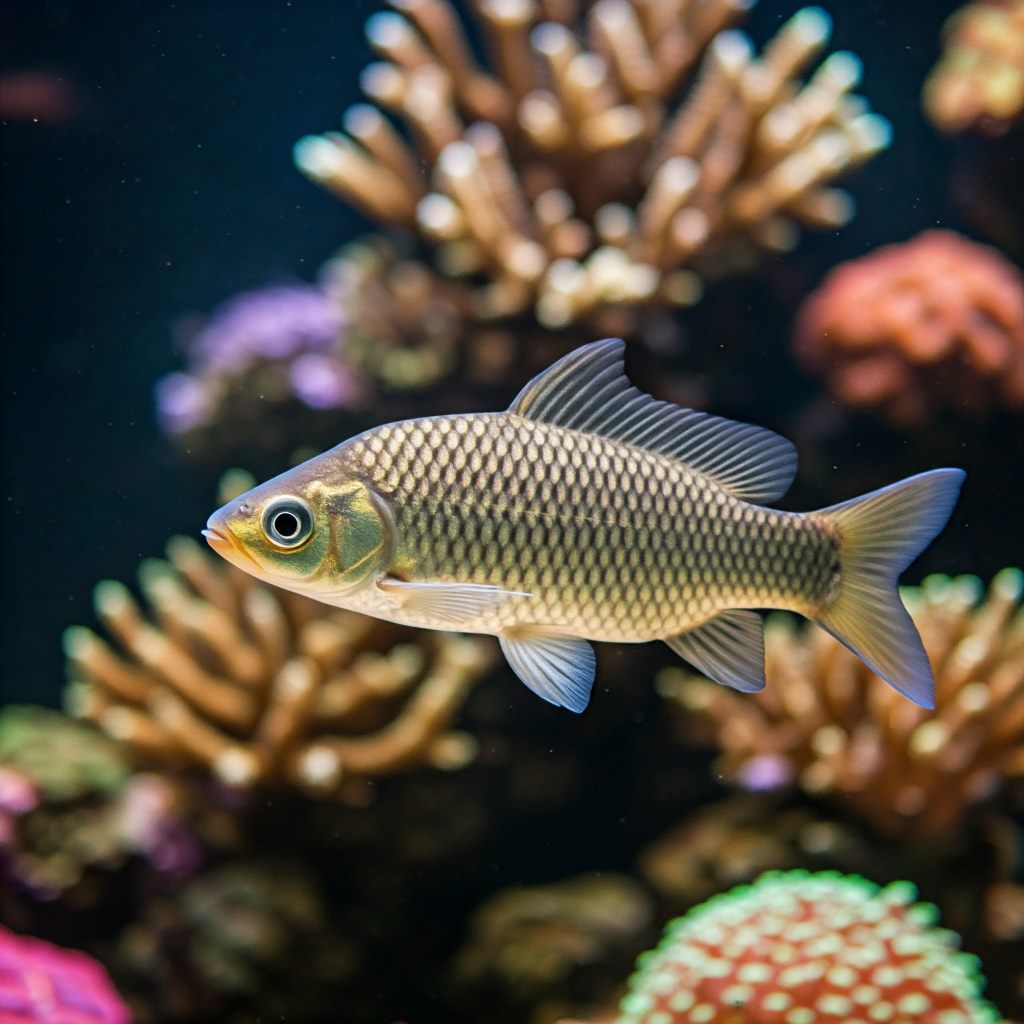
Description:
The Golden Shark is a shimmering freshwater species known for its metallic gold appearance.
Care Requirements:
- Size: Up to 10 inches
- Tank Size: 75 gallons minimum
- Diet: Omnivorous; consumes flakes, live foods, and algae.
- Temperament: Semi-aggressive.
- Water Conditions: pH 6.5–7.5, temperature 72–79°F
Notes:
Prefers a well-decorated tank with caves and plants.
A Gilded Marvel
- Metallic Sheen: Golden Sharks, adorned with metallic-colored fins, create a captivating visual display, especially when swimming in schools.
- Tank Size and Compatibility: Providing a spacious environment and understanding their schooling nature is crucial for their well-being.
11. Harlequin Sharkminnow (Labeo cyclorhynchus)
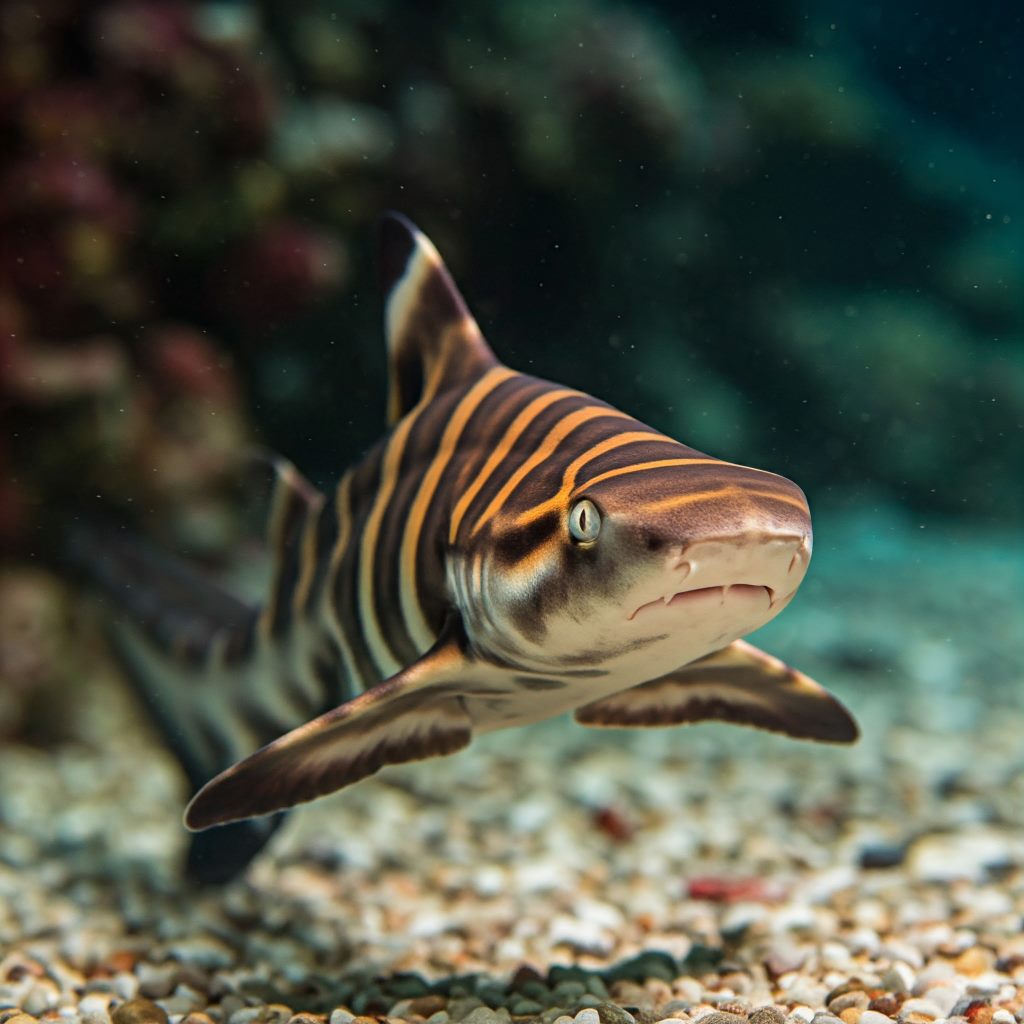
Description:
Harlequin Sharks have a striking black body with golden accents, making them a visual standout in aquariums.
Care Requirements:
- Size: Up to 6 inches
- Tank Size: 50 gallons minimum
- Diet: Herbivorous; algae, plant matter, and wafers.
- Temperament: Territorial.
- Water Conditions: pH 6.0–7.5, temperature 72–79°F
Notes:
Aggressive toward other bottom-dwellers, so tank mates should be chosen carefully.
12. Red Finned Cigar Shark (Leptobarbus rubripinna)
Description:
Named for its cigar-shaped body, this species is an active swimmer with vibrant red fins.
Care Requirements:
- Size: Up to 14 inches
- Tank Size: 75 gallons minimum
- Diet: Omnivorous.
- Temperament: Peaceful.
- Water Conditions: pH 6.5–7.5, temperature 72–79°F
Notes:
Requires ample swimming space and pristine water conditions.
13. Red Tail Shark (Epalzeorhynchos bicolor)
Description:
The Red Tail Shark is a popular species with a jet-black body and bright red tail.
Care Requirements:
- Size: Up to 6 inches
- Tank Size: 55 gallons minimum
- Diet: Omnivorous; thrives on algae, flakes, and pellets.
- Temperament: Territorial.
- Water Conditions: pH 6.5–7.5, temperature 72–79°F
Notes:
Best housed singly to prevent territorial disputes.
14. Roseline Shark (Sahyadria denisonii)
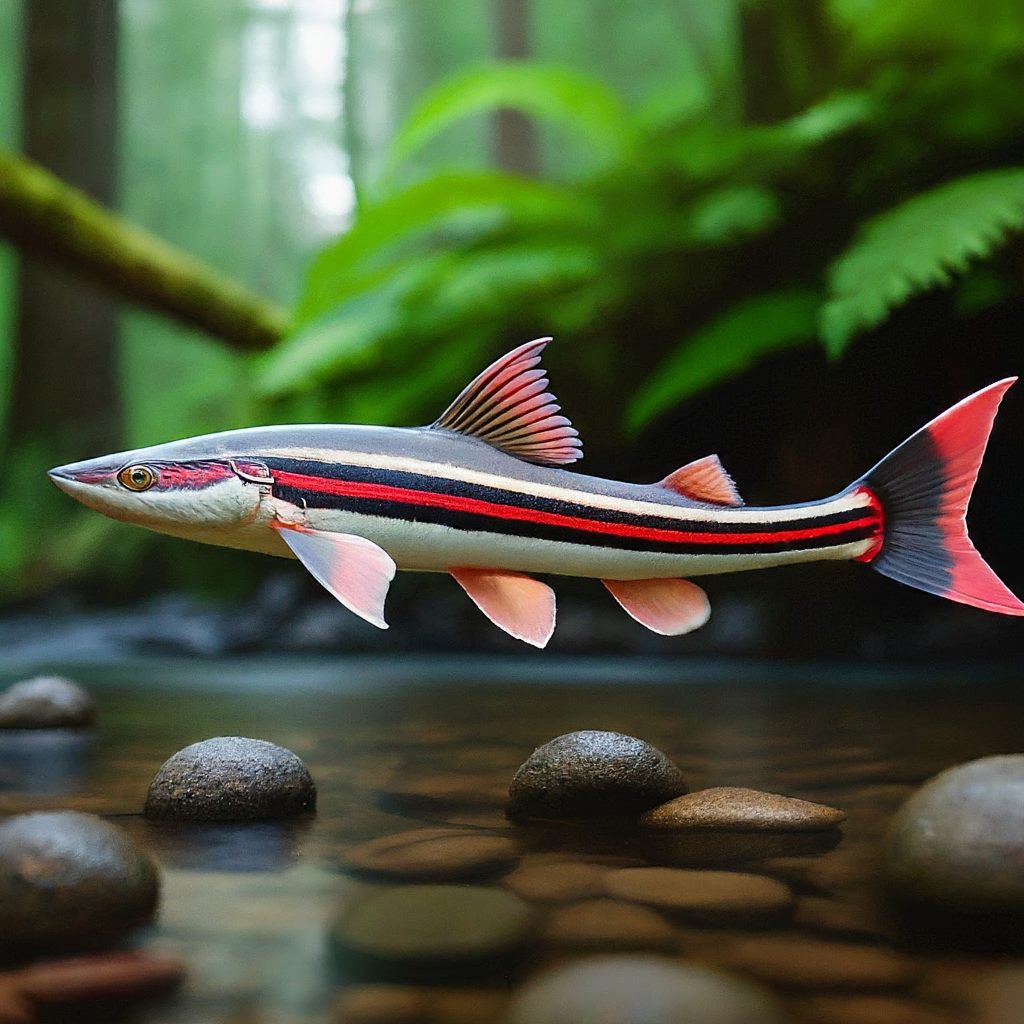
Description:
Also known as Denison Barbs, Roseline Sharks have a silver body with a striking red stripe running through the middle.
Care Requirements:
- Size: Up to 6 inches
- **Tank Size:** 50 gallons minimum
- Diet: Omnivorous; enjoys flake food and live foods.
- Temperament: Peaceful; schooling fish.
- Water Conditions: pH 6.5–7.5, temperature 72–77°F
Notes:
Thrives in groups and needs a well-oxygenated tank.
A Dash of Rosy Hues
- Rosy Red Colors: The Roseline Shark, also known as the Denison Barb, features stunning rosy hues, creating a visually appealing spectacle in aquariums.
- Active Swimmers: Thriving in groups, these sharks showcase their best behaviors when provided with ample space and suitable tank mates.
15. Siamese Algae Eater (Crossocheilus oblongus)
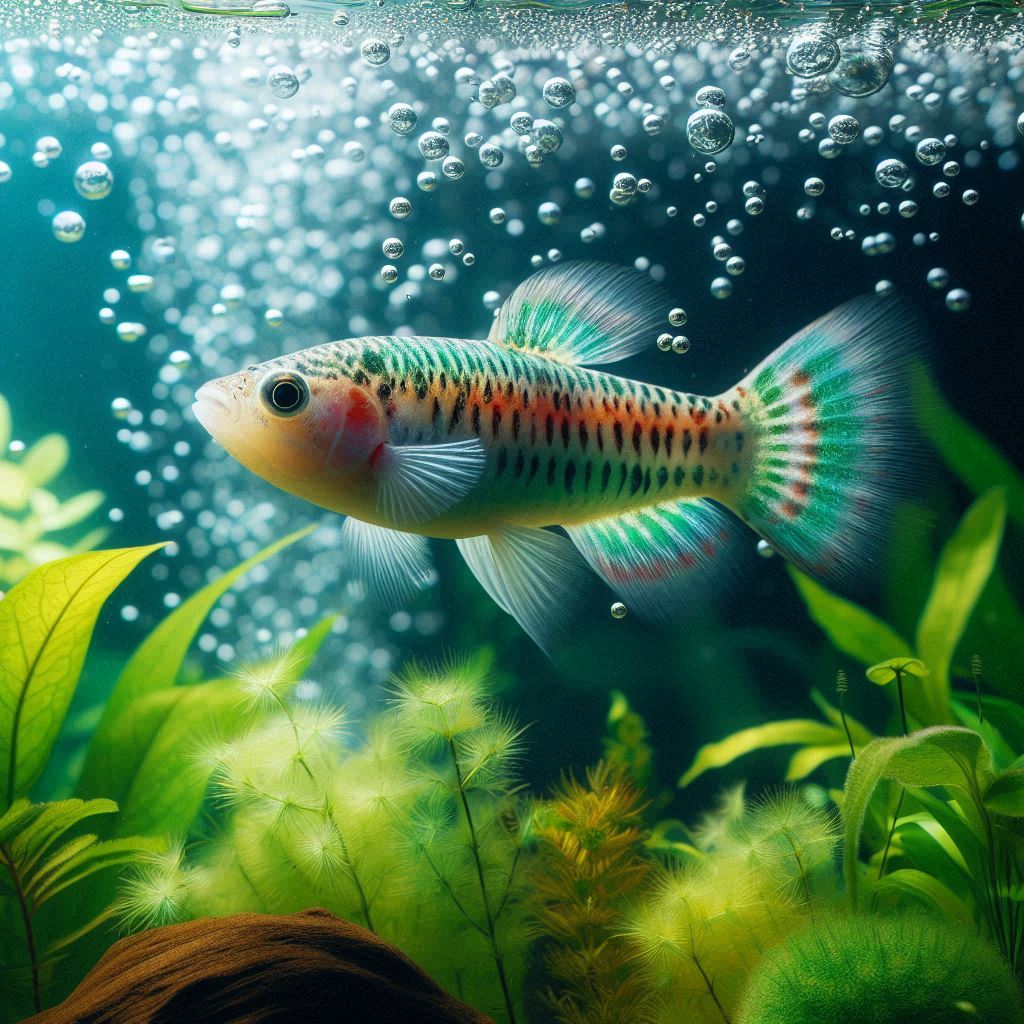
Description:
This hardworking fish is renowned for its algae-eating capabilities and streamlined body.
Care Requirements:
- Size: Up to 6 inches
- Tank Size: 30 gallons minimum
- Diet: Herbivorous.
- Temperament: Peaceful.
- Water Conditions: pH 6.5–8.0, temperature 75–79°F
Notes:
Great for community tanks with compatible tank mates.
Algae-Busting Buddies
- Algae Control: Siamese Algae Eaters are renowned for their efficient algae-eating abilities, contributing to a well-maintained aquarium.
- Schooling Preferences: Thriving in groups, these sharks display their best behaviors when kept in the company of their own kind.
16. Silver Apollo Shark (Luciosoma setigerum)
Description:
Silver Apollo Sharks are slender, fast-moving fish with a metallic sheen.
Care Requirements:
- Size: Up to 10 inches
- Tank Size: 75 gallons minimum
- Diet: Omnivorous.
- Temperament: Peaceful.
- Water Conditions: pH 6.5–7.5, temperature 72–79°F
Notes:
Requires a large tank for active swimming.
Metallic Fins
- Metallic Sheen: The Silver Apollo Shark, adorned with metallic-colored fins, creates a captivating visual display, especially when swimming in schools.
- Tank Size and Compatibility: Providing a spacious environment and understanding their schooling nature is crucial for their well-being.
17. Violet Blushing Shark (Labeo boga)
Description:
This elegant fish has a pale body with a violet hue and translucent fins, giving it a “blushing” appearance.
Care Requirements:
- Size: Up to 6 inches
- Tank Size: 50 gallons minimum
- Diet: Omnivorous.
- Temperament: Peaceful.
- Water Conditions: pH 6.5–7.5, temperature 72–79°F
Notes:
Sensitive to water quality changes.
18. The Iridescent Shark (Pangasianodon hypophthalmus)
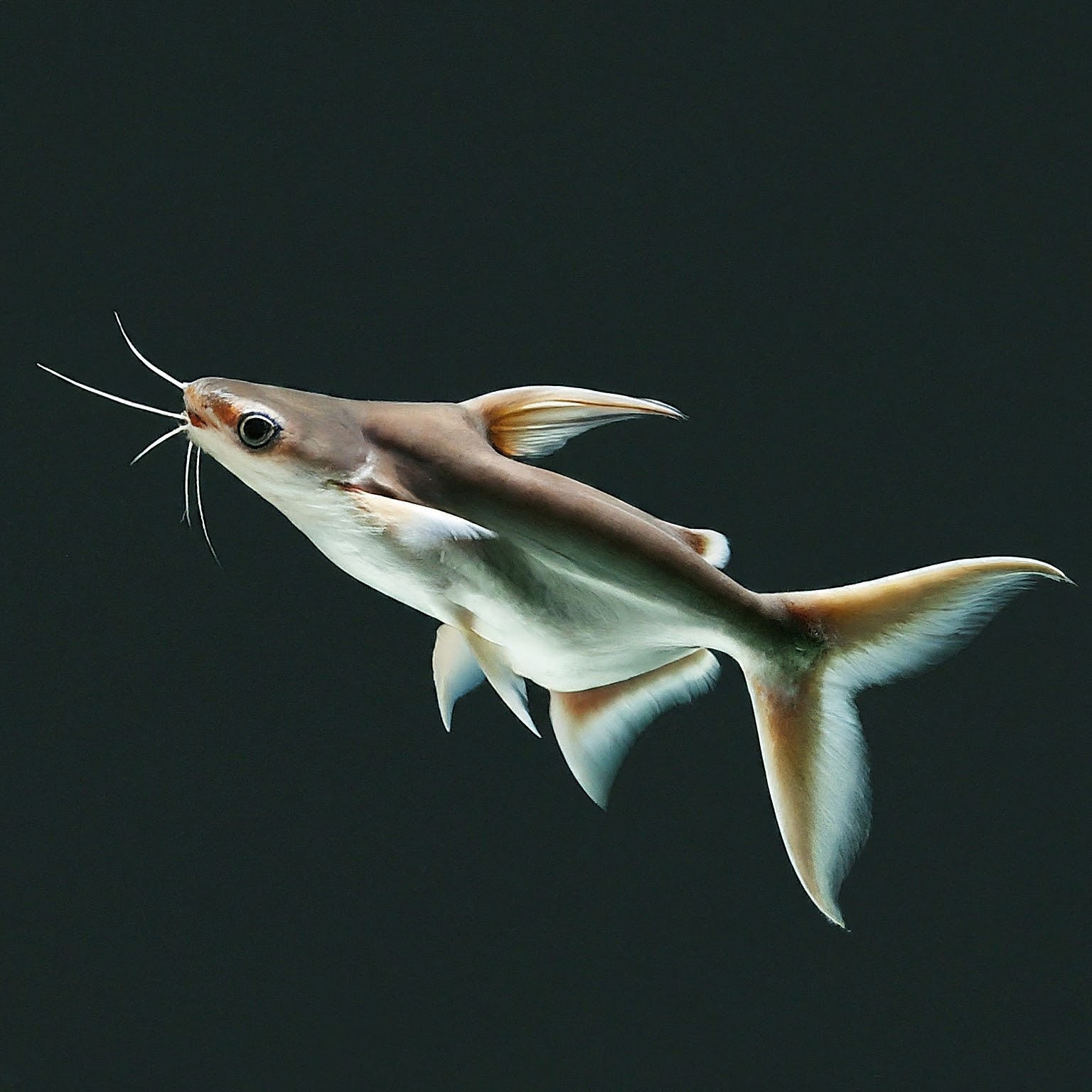
Giant Catfish Charm
- Impressive Size: Iridescent Sharks, known for their substantial size, add a touch of grandeur to larger aquarium setups.
- Active Swimmers: Energetic and active, these sharks require spacious environments to thrive.
The Freshwater Sawfish (Pristis microdon)
Saw-Like Marvel
- Saw-Like Rostrum: With a unique saw-like rostrum, the Freshwater Sawfish is a fascinating addition for those seeking unusual and distinctive species.
- Size and Habitat Requirements: Due to their size and specialized needs, keeping Freshwater Sawfish requires careful consideration.
The Dwarf Rainbow Shark (Microrasbora kubotai)
Miniature Marvels
- Compact Size: Dwarf Rainbow Sharks, despite their small stature, boast captivating colors, making them ideal for smaller aquariums.
- Community Harmony: Known for their community-friendly nature, these sharks thrive in groups and add vibrancy to community setups.
The Paroon Shark
Majestic Giants
- Impressive Size: Paroon Sharks, known for their substantial size, captivate enthusiasts seeking a larger and more imposing aquarium presence.
- Tank Requirements: Due to their size, providing an adequately sized tank is essential for their comfort and well-being.
What Do Sharks in Aquariums Eat?
Aquarium sharks are typically omnivorous, thriving on a balanced and varied diet. They consume:
- Commercial Foods: Tropical granules, color flakes, shrimp pellets, spirulina flakes, and algae rounds are common options.
- Live or Frozen Foods: Brine shrimp, bloodworms, and daphnia are excellent for enhancing development and vibrant colors.
- Vegetation: Some species appreciate algae or blanched vegetables like zucchini and spinach.
Providing a diverse diet ensures healthy growth, robust immune systems, and vibrant coloration in freshwater sharks.
What Type of Aquarium Shark Resembles a Catfish?
The Iridescent Shark (Pangasianodon hypophthalmus) is often mistaken for a catfish due to its streamlined body and whisker-like barbels. Native to Southeast Asia, this species thrives in rivers and is part of the Pangasiidae family, which includes true catfish. Despite its name, it is not a true shark but earns the nickname because of its shark-like appearance.
Are Aquarium Shark Fish Suitable for Consumption?
No, aquarium shark fish are not suitable for human consumption. Unlike fish raised for food, aquarium fish are not subject to food safety regulations and inspections. They may also be exposed to medications, treatments, or water conditions unsuitable for edible fish, making them unsafe for consumption. Aquarium sharks are intended for ornamental purposes only.
Conclusion
Freshwater sharks add a dynamic and striking element to aquariums, but they require careful consideration of their specific needs, compatibility, and tank environment. By understanding the characteristics and care requirements of each type, aquarists can create a thriving habitat that highlights the unique beauty of these captivating species. Always research thoroughly and prepare your tank to meet the demands of these fascinating freshwater sharks.
Care and Maintenance Tips
Tank Size and Setup
The size of your aquarium is a critical factor in successfully keeping freshwater sharks. While some species, like the Harlequin Shark, can thrive in smaller tanks, larger species like the Paroon Shark require tanks of several hundred gallons. Research the specific requirements of each species and provide ample swimming space, hiding spots, and appropriate decorations to mimic their natural habitat.
Water Quality
Maintaining high water quality is paramount for the health of your freshwater sharks. Regular water changes, proper filtration, and monitoring water parameters such as pH, ammonia, nitrite, and nitrate levels are essential. Different species may have specific preferences regarding water conditions, so tailor your setup accordingly.
Diet and Feeding
Freshwater sharks have varied diets, ranging from omnivorous to herbivorous tendencies. Provide a well-balanced diet that includes high-quality pellets, live or frozen foods, and vegetables. Some species, like the Siamese Algae Eater, are particularly effective at controlling algae growth in the aquarium.
Compatibility
When selecting freshwater sharks for your aquarium, consider the compatibility of different species. Some sharks can be territorial or aggressive, especially during breeding seasons. Research the behavior and compatibility of each species to avoid conflicts. Additionally, ensure that tank mates share similar water parameter requirements.
Social Behavior
Understanding the social behavior of freshwater sharks is crucial for creating a harmonious aquarium environment. Some species, like the Bala Shark and Roseline Shark, are schooling fish and thrive in groups. Others, like the Redtail Shark, may exhibit territorial behavior, necessitating careful planning of tank decorations to establish territories.
Breeding Challenges
Breeding freshwater sharks in captivity can be challenging due to specific environmental and behavioral requirements. Some species are egg scatterers, while others may exhibit more complex breeding behaviors. If you are interested in breeding freshwater sharks, research the specific needs of the chosen species and be prepared for the challenges involved.
Freshwater Shark Tank Setup: Creating the Ideal Environment
Setting up a freshwater shark tank requires careful planning to ensure the well-being of your aquatic pets. In this section, we’ll explore the essential elements of a freshwater shark tank setup, covering everything from tank size to decorations.
Tank Size and Dimensions
The first consideration in setting up a freshwater shark tank is the size. Different species have varying space requirements, so research the specific needs of the sharks you plan to keep. Larger species, like the Iridescent Shark or Paroon Shark, may need tanks of several hundred gallons, while smaller species, such as the Rainbow Shark, can thrive in more modest setups.
Ensure the tank has adequate length for the sharks to swim comfortably. Sharks are active swimmers, and a spacious tank allows them to exhibit natural behaviors. A longer tank is often more beneficial than a taller one, as it provides more horizontal swimming space.
Filtration System
Invest in a powerful filtration system to maintain optimal water quality. Freshwater sharks produce waste, and efficient filtration helps remove debris and chemical impurities. Consider a combination of mechanical, biological, and chemical filtration to keep the water clean and clear.
Perform regular water changes to further enhance water quality. The frequency of water changes depends on the size of the tank and the number of sharks. Monitoring water parameters is crucial to ensure a stable and healthy environment.
Substrate and Decorations
Choose a substrate that is appropriate for your freshwater sharks. Sand is a popular choice as it mimics the natural riverbeds and allows foraging behavior. Avoid sharp gravel to prevent injuries to the sharks’ sensitive barbels.
Decorate the tank with structures that provide hiding spots and territories. PVC pipes, caves, and driftwood can create suitable hiding places for more reclusive species. Rocks and plants not only add aesthetic value but also contribute to the overall well-being of the aquarium.
Lighting
Use appropriate lighting for the tank, considering the needs of both the sharks and any live plants. Some freshwater sharks, like the Siamese Algae Eater, may appreciate dimmer lighting, while others, like the Silver Apollo Shark, thrive in well-lit environments. Provide a suitable light cycle to mimic natural day and night conditions.
Freshwater Shark Care Tips: Ensuring a Healthy Environment
Maintaining the health of freshwater sharks involves attentive care and regular monitoring. Here are some essential care tips to keep your sharks thriving:
Water Quality
Consistently monitor water parameters such as pH, ammonia, nitrite, and nitrate levels. Regular water testing, coupled with appropriate water changes, ensures a stable and healthy aquatic environment. Sharks are sensitive to changes in water quality, and maintaining pristine conditions is crucial for their well-being.
Temperature Control
Maintain a stable water temperature within the recommended range for your specific shark species. Most freshwater sharks thrive in temperatures between 72°F and 78°F (22°C to 26°C). Use a reliable heater to regulate temperature and prevent fluctuations that can stress the sharks.
Tank Mates
Choose tank mates carefully, considering the temperament and size of the freshwater sharks. Some species, like the Rainbow Shark, can be territorial, while others, like the Bala Shark, thrive in schools. Avoid aggressive or fin-nipping species that may harass the sharks. Research compatibility before introducing any new fish to the tank.
Behavioral Observations
Regularly observe the behavior of your freshwater sharks. Changes in swimming patterns, feeding habits, or coloration can be indicative of potential issues. Address any signs of stress, illness, or aggression promptly. Providing a well-structured environment with suitable hiding spots allows the sharks to exhibit natural behaviors.
Quarantine Procedures
Before introducing new fish to the main tank, quarantine them to prevent the spread of diseases. Freshwater sharks, like other aquarium fish, can be susceptible to various infections. A quarantine period allows you to observe and treat any potential health issues before adding new additions to the community.
How to Feed Freshwater Sharks: Meeting Dietary Requirements
Feeding freshwater sharks a well-balanced diet is crucial for their health and vitality. Different species have varying dietary preferences, and a diverse menu ensures that they receive the necessary nutrients. Here’s a guide on how to feed your freshwater sharks:
Omnivorous and Herbivorous Species
Many freshwater sharks, such as the Siamese Algae Eater and Rainbow Shark, are omnivores or herbivores. Provide a balanced diet that includes high-quality pellets, flakes, and granules formulated for omnivorous or herbivorous fish. Supplement their diet with fresh vegetables like zucchini, spinach, or cucumber.
Carnivorous Species
Carnivorous freshwater sharks, like the Redtail Shark or Colombian Shark, require a diet rich in protein. Offer high-quality pellets, flakes, or granules designed for carnivorous fish. Additionally, include live or frozen foods such as bloodworms, brine shrimp, and small fish to meet their carnivorous needs.
Feeding Frequency
Establish a regular feeding schedule for your freshwater sharks. Feed smaller portions multiple times a day, mimicking their natural feeding behavior. Overfeeding can lead to water quality issues, so monitor their consumption and adjust the feeding amounts accordingly.
Variety in Diet
Introduce dietary variety to ensure that your freshwater sharks receive a broad spectrum of nutrients. Rotate between different types of pellets, flakes, and live or frozen foods. This not only provides nutritional benefits but also adds enrichment to their diet, keeping them mentally stimulated.
Best Food for Aquarium Sharks: Ensuring Nutritional Excellence
Selecting the right food for your freshwater sharks is crucial for their overall health and vitality. Different species have specific dietary requirements, and offering a well-rounded menu ensures they receive essential nutrients. Here are some top food choices for aquarium sharks:
High-Quality Pellets
Choose high-quality pellets formulated for the specific needs of your freshwater sharks. Pellets provide a balanced diet and are convenient to feed. Look for pellets with a variety of ingredients, including proteins, vitamins, and minerals.
Live and Frozen Foods
Supplement the diet with live or frozen foods to replicate the variety found in their natural environment. Bloodworms, brine shrimp, and daphnia are excellent choices for carnivorous and omnivorous species. Ensure that frozen foods are properly thawed before feeding.
Fresh Vegetables
For herbivorous species like the Siamese Algae Eater, incorporate fresh vegetables into their diet. Zucchini slices, blanched spinach, and cucumber are rich in essential nutrients. Attach vegetables to a weighted clip to make them easily accessible to the sharks.
Specialized Pellets for Herbivores
If you have herbivorous freshwater sharks, consider using specialized pellets designed for herbivorous fish. These pellets typically contain plant-based ingredients to meet the dietary needs of herbivores.
Spirulina-Enriched Foods
Spirulina is a nutritious blue-green algae that provides essential vitamins and minerals. Look for fish foods enriched with spirulina, especially if you have herbivorous or omnivorous freshwater sharks.
Size of Shark School: Schooling Behavior in Freshwater Sharks
Understanding the schooling behavior of freshwater sharks is essential for creating a harmonious tank environment. While not all freshwater sharks exhibit schooling behavior, some species thrive in the company of their own kind. Here’s a look at the size of shark schools for some popular species:
Bala Shark
Bala Sharks are known for their schooling behavior, and they are most comfortable when kept in groups of at least five individuals. A larger school provides a more natural and visually striking display in the aquarium. Ensure the tank is spacious enough to accommodate the active swimming patterns of a Bala Shark school.
Roseline Shark
The Roseline Shark, also known as the Denison Barb, is another species that exhibits schooling behavior. Keeping them in a group of six or more enhances their well-being and allows them to display their vibrant colors and natural behaviors. Provide a tank with ample swimming space for a Roseline Shark school.
Harlequin Shark
Harlequin Sharks, or Harlequin Rasboras, are schooling fish that should be kept in groups of at least six individuals. These small and peaceful sharks appreciate the company of their own kind. A well-planted tank with hiding spots and open swimming spaces is ideal for a Harlequin Shark school.
Silver Apollo Shark
Silver Apollo Sharks, also known as Silver Sharks, are fast swimmers that benefit from a spacious tank. While they may not form traditional schools, keeping them in groups of three or more reduces stress and enhances their overall well-being. Provide open spaces for swimming and appropriate hiding spots.
Redtail Shark
Redtail Sharks are territorial and can be aggressive towards their own kind. It is advisable to keep them singly unless you have an exceptionally large tank with ample hiding spots and territories. Providing territories helps reduce aggression in Redtail Sharks.
Siamese Algae Eater
Siamese Algae Eaters are not traditional schoolers, but they can be kept in groups of three or more. They are generally peaceful and benefit from the company of their own kind. A planted tank with hiding spots and suitable territories is suitable for Siamese Algae Eaters.
Which Freshwater Shark Is Best For You?
Choosing the right freshwater shark for your aquarium involves considering various factors, including tank size, compatibility, and your level of experience as an aquarium hobbyist. Here’s a brief overview of some popular freshwater sharks and their characteristics:
Bala Shark
- Best for larger tanks with ample swimming space.
- Schooling behavior, so keeping them in groups is recommended.
- Active and peaceful, suitable for community aquariums.
Rainbow Shark
- Territorial and may be aggressive, especially towards similar-looking species.
- Vibrant red fins and black body add visual interest to the tank.
- Provide hiding spots and territories to minimize aggression.
Iridescent Shark
- Requires a massive tank due to its potential size.
- Migratory in nature, so a long aquarium is preferable.
- Not suitable for beginners due to its size and specific care requirements.
Albino Shark
- Variation of the Rainbow Shark with albino coloration.
- Territorial tendencies, so provide hiding spots and territories.
- Adds a unique touch to the aquarium with its pinkish-white appearance.
Roseline Shark
- Schooling behavior, so keeping them in groups enhances well-being.
- Vibrant red stripe adds a splash of color to the aquarium.
- Requires a spacious tank with ample swimming space.
Golden Shark (Colombian Shark)
- Peaceful and suitable for community aquariums.
- Recognizable by its golden-yellow coloration.
- Can grow relatively large, so provide a spacious tank.
Redtail Shark
- Territorial and aggressive, especially towards similar-looking species.
- Vibrant red tail and dark body make it visually striking.
- Best kept singly or with non-aggressive tank mates in a large tank.
Harlequin Shark (Harlequin Rasbora)
- Small and peaceful, suitable for smaller community aquariums.
- Distinct black triangular patch and vibrant orange-red body.
- Schooling behavior, so keep them in groups for best results.
Siamese Algae Eater
- Excellent algae eater, suitable for controlling algae in the aquarium.
- Slender body with a horizontal stripe from head to tail.
- Can be kept singly or in groups, depending on preference.
Black Sharkminnow
- Sleek and streamlined with dark coloration.
- Can be slightly territorial, so provide hiding spots.
- Omnivorous, with a well-balanced diet.
Chinese High Fin Banded Shark
- Elongated body with a high dorsal fin.
- Peaceful and can coexist with other non-aggressive fish.
- Requires a spacious tank with ample swimming space.
Silver Apollo Shark
- Fast swimmer with a sleek silver body.
- While not traditional schoolers, keeping them in groups is beneficial.
- Peaceful, but can be territorial, so provide hiding spots.
Violet Blushing Shark
- Unique violet hues and blushing cheeks.
- Relatively peaceful but can be territorial.
- Provide a well-structured environment with hiding spots.
Which Shark Is Easiest to Care For?
For beginner aquarium hobbyists or those looking for low-maintenance options, certain freshwater sharks stand out as easier to care for. Here are some species known for their ease of care:
Bala Shark
- Peaceful and suitable for community aquariums.
- Schooling behavior, so keeping them in groups is recommended.
- Relatively hardy and adaptable to a variety of water conditions.
Siamese Algae Eater
- Excellent algae eater, beneficial for controlling algae in the tank.
- Generally peaceful and easy to care for.
- Can be kept singly or in groups.
Harlequin Shark (Harlequin Rasbora)
- Small and peaceful, suitable for smaller community aquariums.
- Schooling behavior, so keeping them in groups is beneficial.
- Adaptable to various water conditions.
Chinese High Fin Banded Shark
- Peaceful and can coexist with other non-aggressive fish.
- Requires a spacious tank with ample swimming space.
- Relatively easy to care for with a well-structured environment.
Silver Apollo Shark
- Fast swimmer with a sleek silver body.
- While not traditional schoolers, keeping them in groups is beneficial.
- Generally peaceful and adaptable to different water conditions.
Violet Blushing Shark
- Relatively peaceful with unique violet hues.
- Can be kept in a well-structured environment with hiding spots.
- Adaptable to various water conditions.
Which Sharks Are Least Aggressive?
For aquarium enthusiasts seeking a peaceful community tank, certain freshwater sharks exhibit less aggressive behavior than their counterparts. Here are some species known for their relatively peaceful nature:
Bala Shark
- Peaceful and suitable for community aquariums.
- Schooling behavior, so keeping them in groups is recommended.
- Generally tolerant of other non-aggressive tank mates.
Siamese Algae Eater
- Peaceful and beneficial for controlling algae in the tank.
- Can be kept singly or in groups without displaying aggressive behavior.
- Generally compatible with other non-aggressive fish.
Chinese High Fin Banded Shark
- Peaceful and can coexist with other non-aggressive fish.
- Requires a spacious tank with ample swimming space.
- Relatively tolerant and suitable for community setups.
Silver Apollo Shark
- Generally peaceful and adaptable to different water conditions.
- While not traditional schoolers, keeping them in groups is beneficial.
- Compatible with other non-aggressive tank mates.
Violet Blushing Shark
- Relatively peaceful with unique violet hues.
- Can be kept in a well-structured environment with hiding spots.
- Tends to be less aggressive compared to some other shark species.
More FAQ’s About Freshwater Aquarium Sharks
1. Are freshwater sharks real sharks?
No, freshwater sharks are not true sharks. They are primarily fish from families like Cyprinidae and Pangasiidae that share a shark-like body shape or fin structure. Their streamlined appearance and active swimming behavior earn them the “shark” nickname, but they are entirely different from marine sharks.
2. What is the minimum tank size for keeping freshwater sharks?
The tank size varies by species, but most freshwater sharks require a spacious tank to accommodate their active swimming behavior and territorial nature. Small species like the Albino Rainbow Shark need at least 50 gallons, while larger species like the Iridescent Shark or Bala Shark may require tanks of 100 gallons or more.
3. Can freshwater sharks live with other fish?
Yes, but compatibility depends on the species. Some freshwater sharks, like the Roseline Shark or Siamese Algae Eater, are peaceful and can live in community tanks. Others, like the Red Tail Shark or Harlequin Shark, are territorial and may not get along with other bottom-dwelling or similarly shaped fish. Research the specific species and choose tank mates carefully.
4. Do freshwater sharks eat other fish?
Most freshwater sharks are omnivores or herbivores and do not actively prey on other fish if properly fed. However, larger species like the Columbian Shark might consume smaller tank mates if they can fit them in their mouths. To avoid this, house them with appropriately sized or similarly active fish.
5. How can I reduce aggression in freshwater sharks?
- Provide ample space: Ensure the tank is large enough to reduce territorial disputes.
- Add hiding spots: Decorate the tank with caves, plants, and driftwood to help fish establish territories.
- Avoid overcrowding: Overcrowding can lead to stress and aggression.
- Careful selection of tank mates: Avoid pairing aggressive species with timid or similar-looking fish.
- Feed them properly: Regular and balanced feeding reduces competitive behavior.
6. Are freshwater sharks suitable for beginners?
Some freshwater sharks, like the Albino Rainbow Shark or Roseline Shark, can be managed by beginners with some research and preparation. However, larger or more aggressive species, such as the Black Shark or Iridescent Shark, are better suited for experienced aquarists due to their size and care requirements.
7. Do freshwater sharks require special water conditions?
Most freshwater sharks thrive in stable water conditions with a neutral pH (6.5–7.5) and temperatures between 72°F and 79°F. Some species, like the Chinese High-Fin Banded Shark, may require cooler temperatures, while others, like the Columbian Shark, need brackish water as they mature. Always research the specific needs of your chosen species.
8. Can I keep multiple freshwater sharks in the same tank?
Keeping multiple freshwater sharks in the same tank can be challenging, as many species are territorial and aggressive toward conspecifics. If you plan to house multiple sharks, ensure the tank is large enough, provide plenty of hiding spots, and choose species that are more sociable, like Bala Sharks or Roseline Sharks.
9. How long do freshwater sharks live?
The lifespan of freshwater sharks varies by species. Most live between 5 to 10 years, but some, like the Black Shark and Iridescent Shark, can live up to 20 years with proper care.
10. What do freshwater sharks eat?
Freshwater sharks are generally omnivorous. Their diet may include:
Live or frozen foods like brine shrimp, bloodworms, or small crustaceans
Providing a varied diet ensures balanced nutrition and healthy growth.
Algae and plant matter
Pellets and flakes
